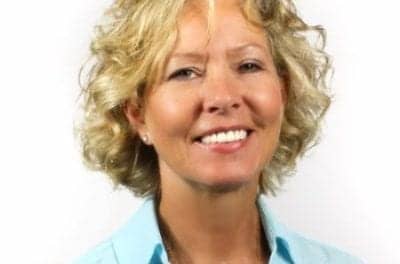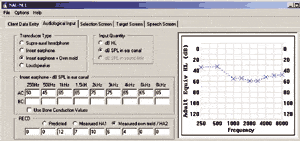Strategies for the mature marketplace

|
| Don Marsh has more than 35 years of marketing communications experience and currently works as an independent marketing consultant and professional speaker. The information in this article was the focus of his recently recorded CD for CareCredit. |
No matter how you read the statistics, the bottom line remains the same: These are challenging times. Even if they weren’t, there is ample evidence to suggest it’s time to look outside the list of usual suspects when it comes to marketing.
Newspaper ads have long been a staple for dispensing professionals. Now newspapers themselves are in trouble, as evidenced by a Pew Report™ that showed readership down more than 16% in the last quarter of 2008 alone. Yellow Page ads are costly, with the results often difficult to track. And most direct mail campaigns don’t come close to a 2% return.
So if you’re looking for new and proven ways to market your practice, especially on a limited budget, consider these “10 Pathways to Success in Challenging Times.” The first five, focusing on internal marketing, were the subject of a CD that I recently recorded for CareCredit.1 The second five, focusing on external marketing, will be available on a second CD currently scheduled for release later in the year.
Pathway #1
Retention Marketing and Purchase Bias
Back in the ’70s, nonprofit organizations in search of new ways to identify high potential donors while reducing their marketing costs created a program known as RFM (Recency, Frequency, Monetary) Modeling. In RFM Modeling an entire database is divided into fifths, or quintiles, based on those three criteria. The result is an ability to create more customized appeals that make better use of time and budgets.
For hearing care professionals, that same goal can be reached by defining purchase bias—or not just the “when” of a patient history, but the “why.” For example, while mining your database, you discover that a patient has a history of investing in new technology. You can assume that “technology” is that bias. If another patient history shows a pattern of purchasing after-market products, that suggests a “service” bias. By developing a variety of targeted sales letters, you’ll create a program that ensures consistent growth at a fraction of the cost of acquiring new patients.
Pathway #2
Tested-Not-Sold Programs
While as few as 3% of tested-not-sold (TNS) prospects return to that same practice, fully 30% will eventually decide to buy elsewhere. Motivational experts will tell you that 80% of a purchase decision is emotion-based. Nowhere is that more true in any segment of our society than in the mature marketplace. As a result, it’s important to follow up with TNS prospects immediately following the initial contact, with another contact 10 to 14 days after that, and then at 30-day intervals.
With each additional contact, introduce value-added concepts—including new technology upgrades and low monthly payment options (cost remains the No. 1 reason why patients do not buy)—to encourage patients to return to you before they decide to look elsewhere.
Pathway #3
Patient Referral Programs
One of the solutions to the problem of either not having the time or not feeling comfortable asking for patient referrals is in developing a handout that can serve as a reminder long after the request has been made.
Boundaries, both legal and ethical, rightly exist to limit the rewards that can be offered. Still, try to be creative. Rather than a pack of hearing aid batteries, offer a gift certificate to a restaurant or movie tickets—the everyday life activities that become more enjoyable with better hearing.
Pathway #4
Trade-Up Programs
The Trade-Up Program was developed years ago for a client who wanted a program that would shorten the usual 4- to 5-year purchase cycle without compromising the integrity of his pricing on high-end products. In other words, incentivizing patients to come in sooner without spending too many marketing dollars to get that result.
The first step was in doing some research to discover the average cost of a sale through the years. That became a “not-to-exceed” figure in terms of how many dollars were being offered.
Based on the logic that older aids cost less, we initially decided that the older the aids, the higher the percentage of trade-up value. After several months of success, we decided to test the opposite theory, offering the highest percentage for the newest aids and the lowest for the oldest.
We found the results basically to be the same. Whether high to low, or low to high, the largest response was in the 2- to 3-year range, where the percentages tended to meet in the middle, no matter which metric was applied.
Because it’s based on the anniversary month of purchase, each patient who bought current aids in the month of June, irrespective of the year, receives this offer in June and so on throughout a 12-month cycle. The Trade-Up Program is an effective way of creating a consistent revenue stream. And all for the cost of a stamp on an envelope.
Pathway #5
Focus Group Programs
The Focus Group program was developed as a twist on the Consumer Seminar, the difference being it was targeted to current patients and not the community at large.
Focus Groups are basically exercises in relationship marketing, 90-minute programs in which patients and spouses are invited to share their opinions about new technology and sample advertising materials. The sessions end with appointments being set in subsequent days.
Neutral settings were key to their success, meaning not holding the sessions in the office itself but at a community center or conference room at the public library—or any place where people were conditioned to go for a personal growth experience of learning something new.
Pathway #6
Internet Marketing
Statistics show that more than 60% of people who shop on the Internet are looking for products and services in their own community. But unless you’ve done a terrific job of branding your practice, chances are your site will not be the first place they look.
Think about developing what’s referred to as a “Power Page.” These are electronic sales letters that drive people to your main or branding site. For example, when people use a search engine to look up “San Diego’s best hearing aids,” they are transported to your Power Page that bears the name SanDiego’sBestHearingAids.com.
Having read the information, they’re invited to list their name and e-mail address. By “clicking here” afterward, two things happen: 1) they are transported to your branding site, and 2) their contact information is forwarded to you for follow-up.
Pathway #7
Free Media
Free media has the advantage of credibility over paid advertising. It’s also a great way to get valuable information into the eyes and minds of your target audience. And it’s free.
The first step toward creating a free media campaign is in developing a directory of local print and broadcast media contacts. This information can be gained at the reference desk of your public library, by contacting the Chamber of Commerce, or even by purchasing that list from a local ad agency.
News releases can be about any subject worthy of the consumers’ attention. The key word, in the language of PR, is “newsworthiness”: Focus on how new technology improves lives, introduce options like third-party financing to help people immediately get the assistance they need, or point out your advanced training or experience.
With almost every newspaper in the country having become a morning edition, the best time to follow up with your media contacts is between 10 am and noon. They’re already in the office and getting ready to spend the afternoon writing and filing stories for tomorrow’s morning paper.
Broadcast media is also a valuable tool. Although I’m not a fan of paid radio advertising—except in some rural communities—using radio for free media is an opportunity worth pursuing. For radio and TV, offer to be a guest on a locally produced news/interview show, programming that traditionally attracts the 50+ viewerships. Prepare a “talking points memo” in advance that helps frame the conversation.
Pathway #8
Community Outreach
Reaching out to participate in the community is another way to market your practice in challenging times. Community outreach programs can involve options like health fairs, but also some new ideas could include promoting a hearing aid essay contest in conjunction with local media, or engaging your practice in a charitable activity helping the community. The key is choosing an activity that not only gets your name into the community but also allows your current patients to participate.
Pathway #9
Hospital Marketing
Years ago, the Columbia-HCA chain developed a senior-oriented program for their hospitals across the country called “Senior Friends.” Most other hospitals, whether for-profit or nonprofit, have followed suit with their own programs since.
These programs allow mature marketplace patients the chance to learn more about products and services that can enhance their lives. Your involvement can include offering to lecture at their monthly meetings, writing an article for their newsletter, or even becoming a Preferred Provider with discounts to members.
Pathway #10
Cross-Marketing
Cross-marketing to other health care professionals does not have to mean working only with ENTs and GPs. It can also mean working with counselors and clergy, professionals who know better than most the impact that loss of communication can have on families and whose target audiences are similar to yours.
These programs can be as simply defined as a reciprocal display of brochures—theirs in your office and yours in theirs. It can also be expanded to a more cooperative venture designed to create awareness of information that can provide solutions to common problems affecting people every day of their lives.
These “10 Pathways” can help you think of new ways to create marketing success stories of your own, while at the same time enhancing the patient experience and increasing practice growth.
Reference
- Marsh D. Motivating the Mature Marketplace: Five Key Concepts You Should Know. Costa Mesa, Calif: CareCredit. Available by e-mail at: .
Correspondence can be addressed to [email protected] or Don Marsh at ; www.MatureMarketplace.com; (858) 792-6553.
Citation for this article:
Marsh D. 10 pathways to marketing success in challenging times. Hearing Review. 2009;6(6):32-34.





